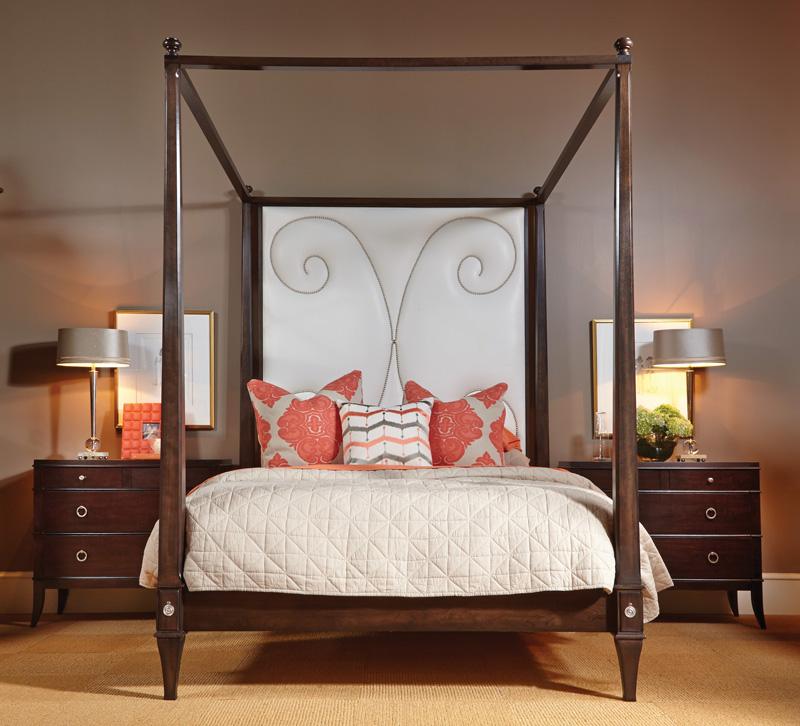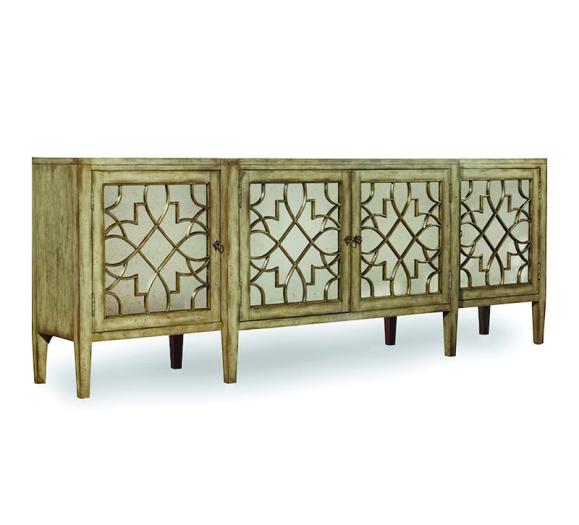When news hit that high-end casegoods and upholstery producer Harden Furniture was closing the doors of its factory in McConnellsville, NY, industry observers shook their collective heads in resignation. A widely admired chief executive, Greg Harden, fifth generation of the founding family to run the company, had lost the battle to save what is believed to be the oldest producer of residential furniture in North America.
Or had he? Following a brief shutdown during which the company was sold at a foreclosure auction, the Syracuse Post-Standard reported that Harden Furniture had resumed limited production. Nearly half of its 172 employees were back on the job, with the remaining expected to return in the near term. Could there yet be hope for domestically produced casegoods at the better end of the market?
Oceans White with Foam
When Gat Caperton purchased what was then a troubled West Virginia-based Tom Seely Furniture in 1996, roughly 10 percent of wood furniture products sold in the U.S. were imported from Asia. “Then in 2001, when China entered the World Trade Organization (WTO), the furniture industry changed…a lot. We had a huge amount of product come in, first from China, then all of Asia as well, and what used to not be a terribly competitive marketplace became very competitive very fast,” remembers the President and Chief Executive of the company known today as Gat Creek. “It was also a marketplace that had an incredible amount of product dumped into it below cost. The practice was widespread and it beat up a lot of people.”
Although China was ultimately charged with violating U.S. trade laws for its illegal dumping practices in the early years of the onslaught, experts say the playing field for domestic players was never actually level to begin with. And it wasn’t just that American furniture companies were at a severe disadvantage in terms of labor costs.
“It’s a struggle for everyone trying to make furniture in the U.S.,” says Doug Bassett, President of Vaughan-Bassett in Galax, VA, “because there are a lot of built-in disadvantages. Most countries we compete with do not have an EPA or OSHA. As an American manufacturer, we are glad to comply with 99 percent of all the regulations, and we certainly understand the good intentions behind them, but that’s not to say there aren’t some ridiculous regulations that should go away.”
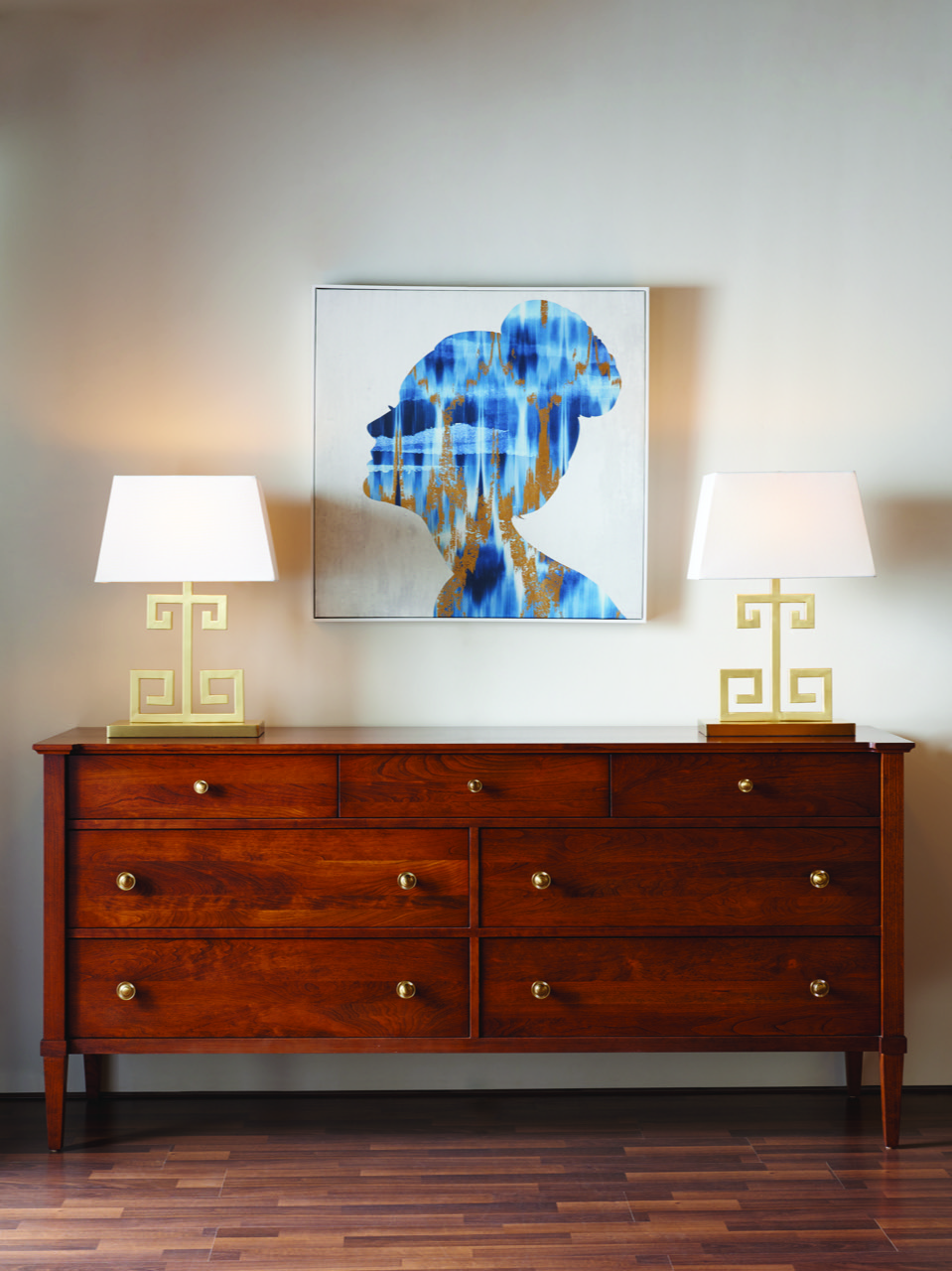
Additionally, prior to that first wave (some would say tsunami) of imported product, most of the wood furniture shipped to the U.S. had been made from cheap rubber wood, a species widely available in Asia. But it wasn’t long before Asian manufacturers realized they could buy lumber in the U.S. and ship the wood back to their countries for next to nothing thanks to the steady stream of empty containers the U.S. was sending back across from all consumer products categories. “So they began buying our lumber and making furniture out of it and sending it back here,” describes industry analyst Wallace “Jerry” Epperson, founder and Managing Director of Mann, Armistead and Epperson, an investment banking and research firm based in Richmond, VA.
Eventually, most American furniture companies were faced with a choice: Close their doors or reinvent themselves as marketing companies that could develop, design and sell furniture, while contracting with Asian factories to actually build the products. The result: “Imports now account for a touch over 85 percent of all of the furniture sold in the United States, with the vast majority coming from one of the Asian nations,” Epperson says.
Home of the Brave
“I’ve always been a factory guy and we really worked to become very efficient, world-class manufacturers,” Caperton says of Gat Creek and his lean manufacturing strategy that has focused on beautiful craftsmanship and eliminating waste. “So much of the industry has been about mass production. We build exactly what people order.”
Some, like the storied Stickley Furniture company based in Manlius, NY, chose to pursue a blended manufacturing strategy, continuing to produce furniture domestically while also building a plant overseas. Harden — known for heirloom quality furniture and custom finishes that, much like original pieces of art, are numbered, registered and kept on file with the company should a customer decide they want to match it in the future — was among those that steadfastly chose to remain stateside.
“We were working hard to maintain our share of mind with consumers and very hard with our retailers to keep displays and commitments up, but we were swimming against the current,” Harden recounts. “One of the things that was an advantage for us during those days was that we were small enough to be nimble, but we were very rapidly approaching what was going to be an impossible situation for high-end casegoods. Then, just like almost all our peers, we saw our volume cut in half by the financial crisis and the Great Recession.”
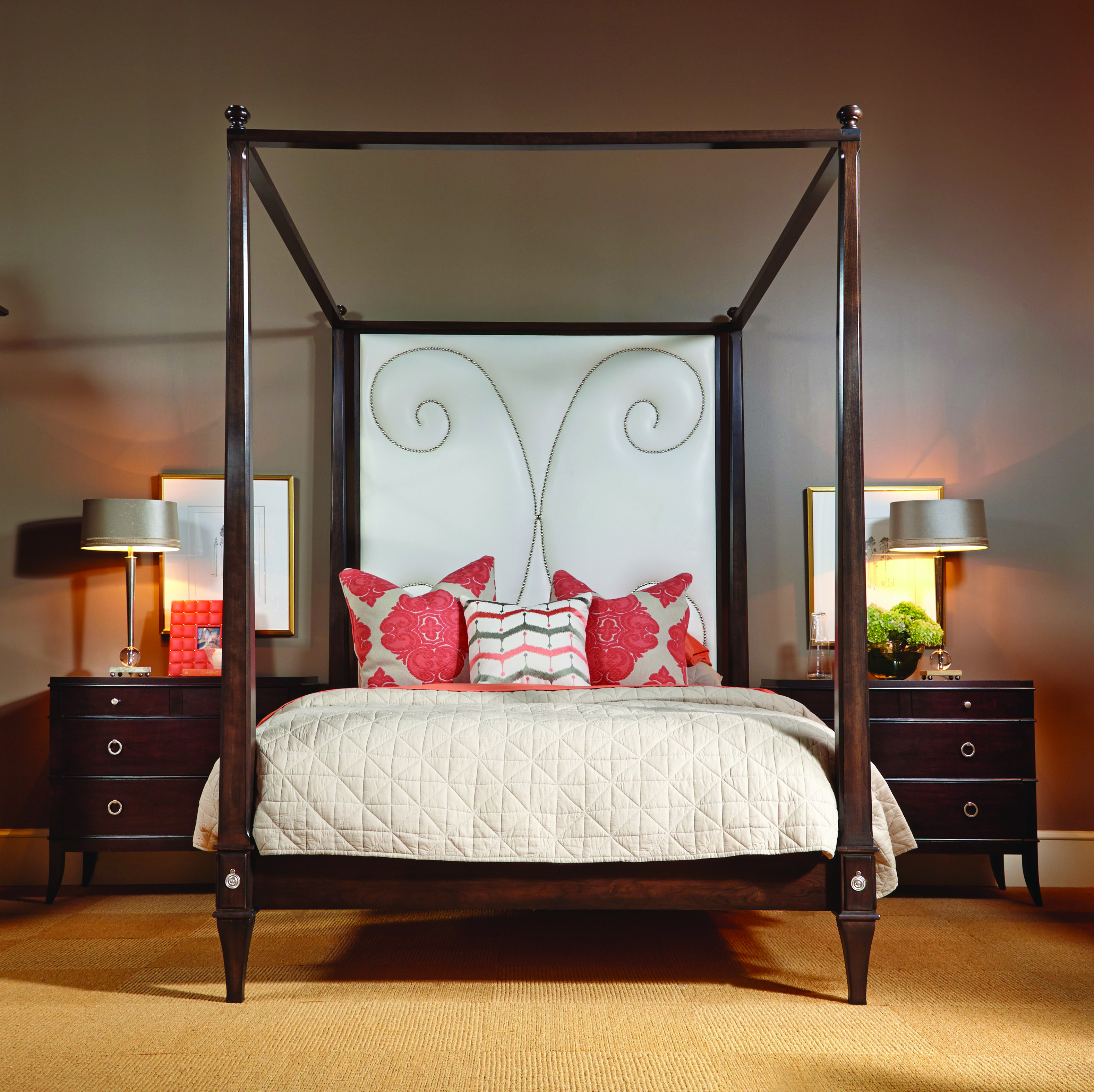
In the years immediately following the Wall Street meltdown, even affluent consumers with a predilection for luxury goods grew increasingly price-conscious. “The biggest challenge for our industry overall, at all price points, was that we were losing retailers hand-over-fist,” Harden describes. For a company that relied heavily on high-end independent retailers to distribute its products, that was the deepest cut of all.
“We used to have two or three good, high-end retailers in every market,” Harden remembers. “But in the first few years following the financial crisis, nearly one-third of all furniture retailers went out of business. By 2013, out of our top 25 retailers, only two were left in business, and in some major markets today, there’s nobody left at the high-end. A lot of the retailers that are still in business have traded down, with a lot more imported product, and more lower-priced product, than ever before.”
In hindsight, Harden says, “The consumer was changing, the way they were getting information was changing and retail was changing, but we still relied on the independent retailer for the majority of our business. I think if we made a mistake it’s that we didn’t start the pivot to the design community early enough. We did as much as we felt we could, without compromising our retailers, but we didn’t do it quickly enough. It also takes a long time to build that business because in the design community it’s almost all relationships. The key for us now is to demonstrate to designers that we’ve changed, that we’re not your grandfather’s Oldsmobile.”
Handmade in the Heartland
“The competition in style and expression from imported casegoods is very real,” says furniture designer Catina Roscoe, President of the American Society of Furniture Designers, “and the challenge for domestic casegoods producers is price. To compete, domestic casegoods lines must communicate their value and show how their product will enhance the quality experience of the consumer’s style of living. It’s up to domestic brands to reach consumers — explaining not just what they make, but why they make it.”
Storytelling and a focus on heritage and craftsmanship have been keys in the growing awareness and mainstreaming of Amish casegoods companies, a group of manufacturers whose strong sense of community and way of life has meant that shipping production overseas has never been considered an option. Largely built by hand in small, family-owned and –operated workshops located throughout the heartland using construction techniques passed down through generations, Amish furniture has long been associated with quality, sustainably harvested hardwoods like oak, cherry, maple, elm and walnut.
Stylistically speaking, however, Amish furniture has also long been characterized by straight lines, sharp angles and weighty traditional styles, as well as a degree of sameness, because those small workshops typically sold the same styles to a number of larger furniture companies that distributed the goods. Yet, the Amish too have felt the effects of competitive pressures with some companies re-evaluating their strategies in recent years. Fueled by a desire to play in the big leagues and to appeal to consumers’ growing appetite for high-quality, solid wood furnishings, Nappanee, IN-based Borkholder Furniture, for example, began expanding beyond its traditional roots four years ago — scouting world-class designers known for their ability to reinterpret traditional styles for modern audiences, and then pairing them with their talented craftspeople. At the same time, company executives challenged a select group of workshops to produce the proprietary designs exclusively for Borkholder and Borkholder alone.
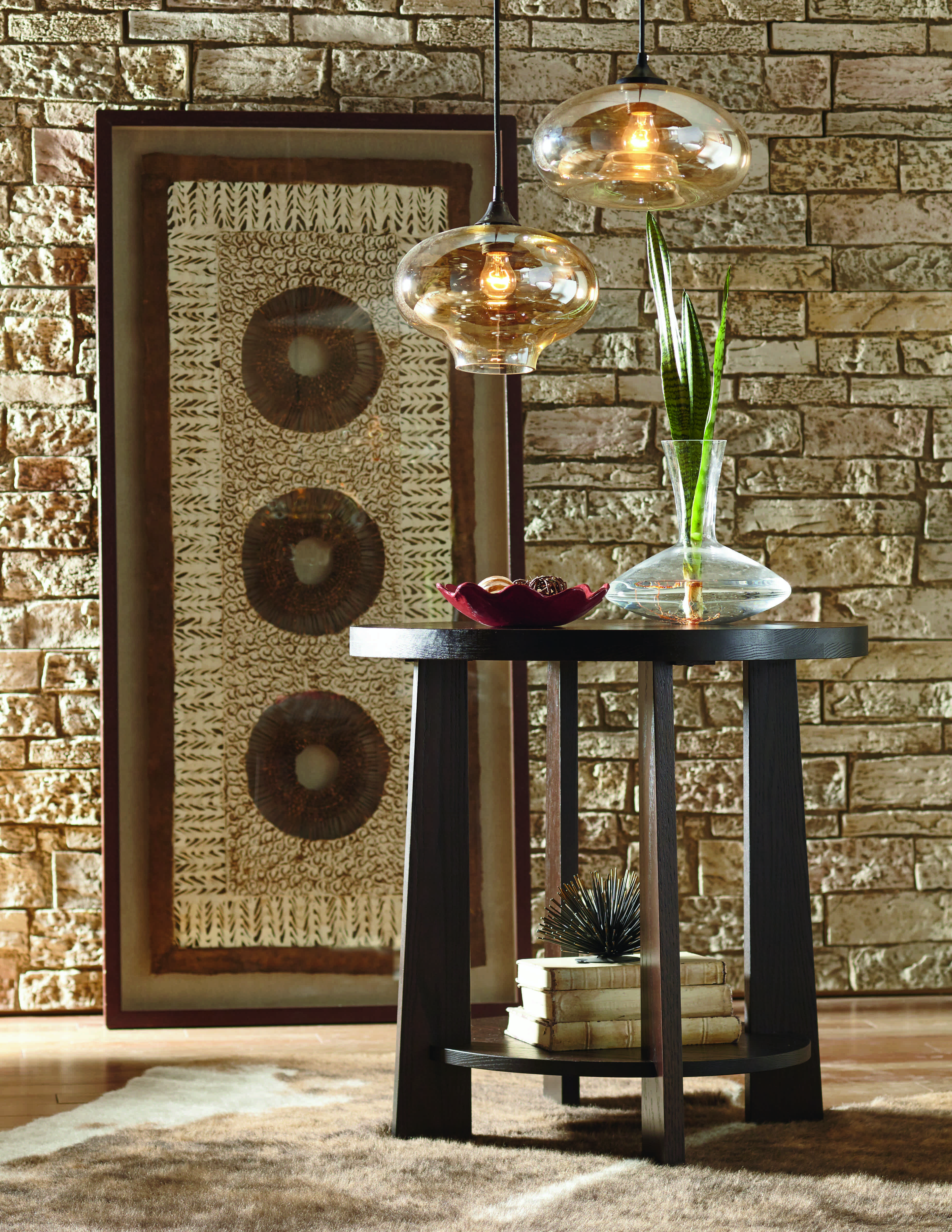
Known for clean-lined, heirloom-quality, bedroom, dining and occasional silhouettes, Borkholder Furniture has been steadily expanding its distribution beyond better-end furniture stores to embrace interior designers. Now, in High Point this month, Borkholder is set to enter an entirely new realm: Easy-to-assemble quality solid wood furniture that, like the rest of the company’s offerings, is made in America. Unlike inexpensive, frustration-inducing, ready-to-assemble pieces made from particle board with hard-to-decipher assembly instructions, the new solid wood occasional tables take only minutes to assemble. Designed to complement the company’s existing fully assembled designs, and to be a precursor for a major new collection called Modern Canyon set for fall, the tables are also packaged in a way that saves on freight and makes the furniture UPS-shippable.
“Our goal is to associate Borkholder Furniture with new thinking,” says Borkholder Vice President Tom Halvorsen. “As a better-end casegoods company, it’s very difficult for us to compete with imported occasional furniture. There’s just no bottom to the market. Yet we believe consumers at all stages and income levels are seeking quality, and this is just another creative way that we are distinguishing ourselves from the rest of the field.”
My Home Sweet Home
Roscoe believes the easy-to-assemble tables will appeal to both younger on-the-move Millennial consumers who have likely learned that it is near impossible to transport ready-to-assemble furniture made from particleboard to a new space and to downsizing Baby Boomers “who understand quality and are at a point in their lives where they are seeking a hipper perspective and living experience.”
Others, like Simply Amish, are focusing not only on design, but on finding ways to speed up delivery on custom-made goods. “Our goal is to ship everything out the door in eight weeks,” remarks Kevin Kauffman, Co-founder and Owner of the Arcola, IL-based company, which also stocks finished goods available for delivery in four weeks or less. “I was in Las Vegas 12 years ago, and somebody asked me where I import the furniture from. I answered, ‘Illinois.’ He said, ‘No. Where is it really from?’ I said, ‘We manufacture in Illinois.’ He said, ‘Well, that’s the stupidest thing I’ve ever heard. You’re not going to make it past the next couple of years because nobody is going to manufacture in the United States and stay alive.’ I told him, ‘That’s where we’re going to differ in opinion.’ We’ve found that if we can get our furniture in front of the consumer, they will pay more because they recognize the value.”
Caperton suggests that consumers’ concerns about health are also playing a role in their gravitation toward domestically made goods. “When you buy an American-made product made from solid wood, you are buying a product you can trust,” he says.
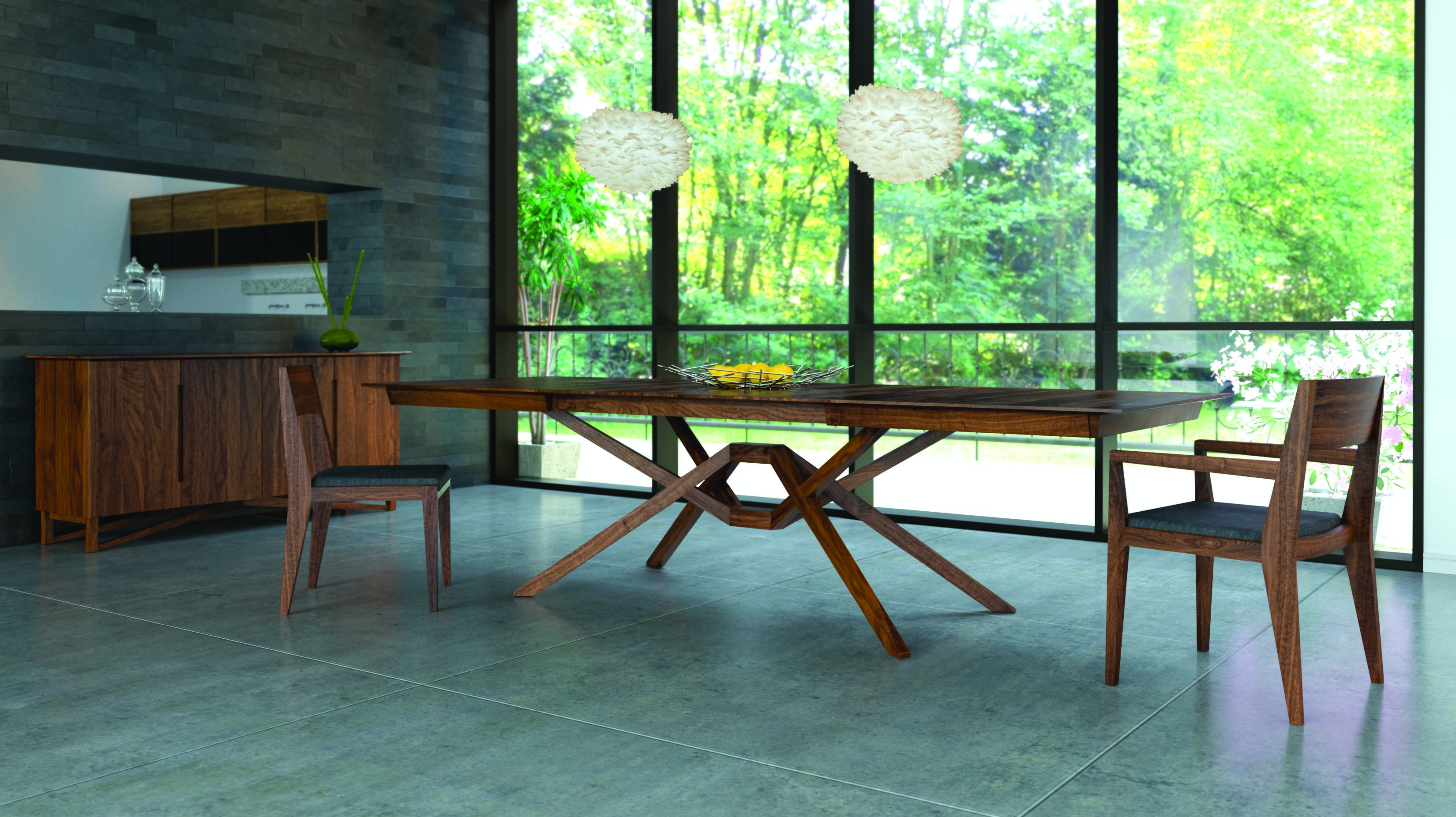
Tim Copeland, President of Bradford, VT-based Copeland Furniture and a Platinum-status Sustainable Furnishings Council member, believes that an increasing number of consumers are also interested in the sustainability story attached to American-made goods. “The amount of fuel and energy involved in transporting furniture back and forth across the globe is phenomenal,” he comments. In 2015, the company invested $1.3 million in building a solar array on three acres of land immediately across the street from the factory. “It produces about 700,000 kWh per year into the local power grid, an amount equal to a little more than 60 percent of the approximately 1.15 million kWh per year our factory uses.”
“Younger consumers on their way to affluence are looking more and more to domestic product purchases,” Roscoe asserts, “if the design speaks to their lifestyle expression. They are looking for authentic brands that convey their values and they are willing to spend money on them. They are seeking not so much the luxury story as they are the story and purpose behind the products.”
“There is a discerning customer out there that wants design and quality,” agrees Copeland, whose company got its start serving major specialty retailers like Crate & Barrel, Storehouse and Room and Board with accessible modern design built using high-quality American hardwoods. “Our industry got sucked into a constant race to the bottom, and I think it is crazy to focus on price. There are folks out there that aspire to something nicer with better design.”
That point has not been lost on mainline furniture companies like Vaughan-Bassett. “For most of our history we’ve been a promotional bedroom company, making veneer bedrooms,” Bassett describes. “Three years ago, we realized the growth in the bedroom segment, and really the entire casegoods segment, was coming from solid wood product, particularly what the Amish were doing in Indiana, Ohio and Pennsylvania. So we launched a new division called Artisan & Post, and over the last 30 months, we’ve gone to producing less than zero percent in solid wood, to about 40 percent of our business.
“Our point of differentiation is that we carry a tremendous amount of finished goods inventory, a little more than $10 million just in our Artisan & Post division, so most of our dealers are able to offer two-week delivery from the time the customer orders to the time the furniture is in their home.” The company has since added a third division called Appalachian Hardwoods to expand its price point offerings and broadened its styles to include younger, less traditional looks. This market, it will introduce the fourth Artisan & Post bedroom collection in solid maple and birch with a reclaimed, heavily distressed and antiqued feel.
“Eight years removed from the financial crisis, a lot of people have been through the learning curve of what you get is what you pay for,” Bassett sums. “The buying power is shifting to people in their ‘30s and ‘40s, and they are beginning to look for real value, not something they are going to dispose of like a car or a sweater. And that’s why the domestic solid wood casegoods category is doing very well.”



